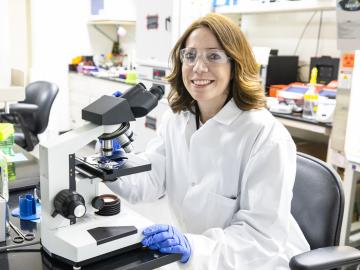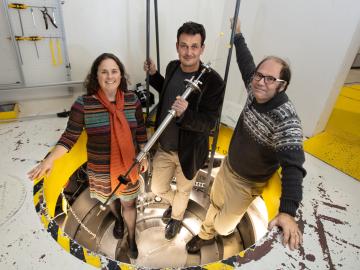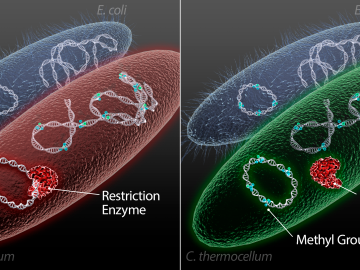
Filter News
Area of Research
News Topics
- (-) Artificial Intelligence (18)
- (-) Bioenergy (13)
- (-) Energy Storage (10)
- (-) Exascale Computing (12)
- (-) Grid (11)
- (-) Materials Science (8)
- (-) Mercury (2)
- (-) Space Exploration (5)
- (-) Summit (11)
- (-) Transportation (7)
- 3-D Printing/Advanced Manufacturing (11)
- Advanced Reactors (1)
- Big Data (8)
- Biology (16)
- Biomedical (5)
- Biotechnology (2)
- Buildings (6)
- Chemical Sciences (10)
- Clean Water (7)
- Composites (2)
- Computer Science (22)
- Coronavirus (1)
- Critical Materials (1)
- Cybersecurity (6)
- Emergency (1)
- Environment (36)
- Fossil Energy (2)
- Frontier (13)
- Fusion (7)
- High-Performance Computing (18)
- Hydropower (2)
- Isotopes (7)
- Machine Learning (11)
- Materials (21)
- Mathematics (2)
- Microelectronics (2)
- Microscopy (3)
- Nanotechnology (5)
- National Security (15)
- Neutron Science (26)
- Nuclear Energy (19)
- Partnerships (6)
- Physics (11)
- Polymers (2)
- Quantum Computing (6)
- Quantum Science (5)
- Security (1)
- Simulation (19)
- Software (1)
Media Contacts

Joanna Tannous has found the perfect organism to study to satisfy her deeply curious nature, her skills in biochemistry and genetics, and a drive to create solutions for a better world. The organism is a poorly understood life form that greatly influences its environment and is unique enough to deserve its own biological kingdom: fungi.

For nearly three decades, scientists and engineers across the globe have worked on the Square Kilometre Array (SKA), a project focused on designing and building the world’s largest radio telescope. Although the SKA will collect enormous amounts of precise astronomical data in record time, scientific breakthroughs will only be possible with systems able to efficiently process that data.

Illustration of the optimized zeolite catalyst, or NbAlS-1, which enables a highly efficient chemical reaction to create butene, a renewable source of energy, without expending high amounts of energy for the conversion. Credit: Jill Hemman, Oak Ridge National Laboratory/U.S. Dept. of Energy

Students often participate in internships and receive formal training in their chosen career fields during college, but some pursue professional development opportunities even earlier.

Scientists at the U.S. Department of Energy’s Brookhaven National Laboratory have new experimental evidence and a predictive theory that solves a long-standing materials science mystery: why certain crystalline materials shrink when heated.

Two of the researchers who share the Nobel Prize in Chemistry announced Wednesday—John B. Goodenough of the University of Texas at Austin and M. Stanley Whittingham of Binghamton University in New York—have research ties to ORNL.

The type of vehicle that will carry people to the Red Planet is shaping up to be “like a two-story house you’re trying to land on another planet.

Scientists at the US Department of Energy’s Oak Ridge National Laboratory have demonstrated a method to insert genes into a variety of microorganisms that previously would not accept foreign DNA, with the goal of creating custom microbes to break down plants for bioenergy.

A modern, healthy transportation system is vital to the nation’s economic security and the American standard of living. The U.S. Department of Energy’s Oak Ridge National Laboratory (ORNL) is engaged in a broad portfolio of scientific research for improved mobility

More than 6,000 veterans died by suicide in 2016, and from 2005 to 2016, the rate of veteran suicides in the United States increased by more than 25 percent.


